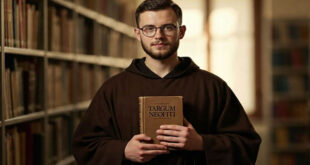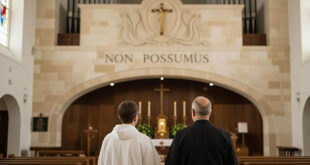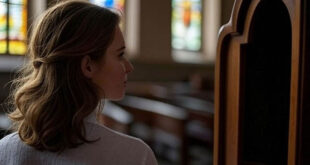From the earliest days of Christianity, the Church has been seen by the faithful as both a mother who cares for, guides, and protects, and also as a teacher who illuminates the way with the truth of Christ. This dual role—being both mother and teacher—is essential to understanding its mission in the world. The Church not only offers spiritual comfort and refuge in difficult times, but it is also the custodian of an eternal wisdom that seeks to shape our consciences and guide our lives toward truth and goodness. At the heart of this educational and formative mission is the Catechism.
The Catechism of the Catholic Church, a text that is often underestimated or overlooked, is actually one of the most powerful and valuable tools the Church offers to help us learn, understand, and live our faith coherently and deeply. In this article, we will explore what it means for the Church to be a “mother and teacher” and how the Catechism plays a fundamental role in its mission to guide us toward truth, particularly in our modern times.
The Church as Mother: A Care That Forms and Protects
When we say the Church is a mother, we refer to its ability to welcome, nurture, and care for its spiritual children. From the moment of baptism, believers are welcomed into the great family of the Church, where we find a community that accompanies us on life’s journey. However, this maternal care is not limited to emotional protection or comfort in difficult times; it also involves a deep responsibility in the formation of conscience and growth in faith.
Just as a mother teaches her child what is good and protects them from danger, the Church educates its children in truth, helping them discern right from wrong, light from darkness. But how does it fulfill this educational mission? This is where the Catechism comes into play.
The Church as Teacher: Passing on Truth Through the Ages
The Church not only cares for us but also teaches us. It is a teacher that, over the centuries, has transmitted the truths of the Gospel and the principles of Christian life. In this sense, the Church’s teaching is not arbitrary or changeable; it is deeply rooted in Revelation and in the living tradition that has been passed down from generation to generation.
The Catechism of the Catholic Church is a systematic compendium of this teaching. Published in its current form in 1992 under the guidance of Saint John Paul II, the Catechism is a reference for the faithful worldwide, as it clearly and systematically outlines the fundamental truths of the Christian faith. It is a guide not only for priests or religious, but also for laypeople who seek to better understand their faith and live according to the values of the Gospel.
The Catechism: A Guide and Light in Times of Confusion
In modern times, marked by growing moral confusion, relativism, and rapid societal changes, the clarity of the Church’s teaching is more necessary than ever. The Catechism is not simply a book of rules or dogmas; it is a true light in the darkness, a map that helps us navigate the ethical, spiritual, and social challenges we face today.
Often, we encounter profound questions: What does it really mean to live a Christian life today? How do we apply the principles of our faith to issues like social justice, human dignity, family, or bioethical dilemmas? The Catechism provides us with answers based on Divine Wisdom and human reason. It reminds us that truth is not relative but anchored in God’s revelation and in the continuous teaching of the Church.
For example, in bioethical matters such as abortion, euthanasia, or new genetic technologies, the Church’s teaching, as presented in the Catechism, provides a solid foundation for discerning the dignity of human life from conception to natural death. In a world that often confuses technical progress with moral good, the voice of the Catechism calls us to remember the unchanging principles of respect for life and God’s creation.
Catechesis in the 21st Century: Forming to Transform
The role of the Catechism is not merely academic or theoretical; its purpose is to form disciples who live the faith in an authentic and transformative way. In the 21st century, catechesis—teaching the faith—faces new and complex challenges. New technologies, media, and modern culture have changed the way we learn and relate to the world. However, the message of the Catechism remains relevant.
Now more than ever, we need a catechesis that not only instructs but also inspires. And the Catechism has the power to do so when used dynamically and creatively. Parish communities, ecclesial movements, and families are called to use the Catechism as a living tool, a constant source of inspiration for learning and living the faith amidst the concrete circumstances of our daily lives.
In this regard, Pope Francis has emphasized on various occasions the need for catechesis that is centered on the love of God and that touches the hearts of people. The Catechism is not a cold list of norms but an expression of the Church’s deep desire to lead us to encounter Christ, who is the truth. Thus, studying the Catechism should not be seen as a mere duty but as an opportunity to discover God’s transformative love and bring it into our lives and society.
The Catechism and Evangelization
The Catechism also plays a crucial role in evangelization. The Church’s mission is not only to care for those who are already part of the community of believers but also to bring the message of Christ to those who do not know Him or who have drifted away from the faith. The Catechism, by systematically and accessibly presenting the truths of the faith, is a valuable tool for those seeking to deepen their understanding of Christianity or who are searching for answers to life’s fundamental questions.
In this context, the Youth Catechism (YouCat), an adapted version of the Catechism for a younger audience, has been a key initiative. Published in 2011, this catechism uses accessible and direct language to help young people discover the richness of the Christian faith. It is an example of how the Church’s teaching can be presented in creative and relevant ways for new generations.
Conclusion: The Catechism as a Beacon on the Journey
The Church, as both mother and teacher, offers the Catechism as a compass to guide us toward truth in a world full of distractions and false promises. At a time when the voices of the world can create confusion and doubt, the Catechism remains a beacon of light that illuminates the way to Christ, the incarnate Truth.
Through the Catechism, the Church not only preserves and transmits Christ’s teachings but also offers each of its children the opportunity to know, love, and live the truth. In a world that often rejects the idea of objective truth, the Catechism reminds us that truth is not something we create or mold to our convenience; it is a gift we receive from God and are called to embrace and live with gratitude and love.
Therefore, we should not see the Catechism as a book for occasional reference but as a continuous source of wisdom and guidance on our journey of faith. The Church, our mother and teacher, through the Catechism, continues to invite us to grow in knowledge and love of the truth, so that, enlightened by it, we may live fully as children of God and witnesses of His love in the world.






